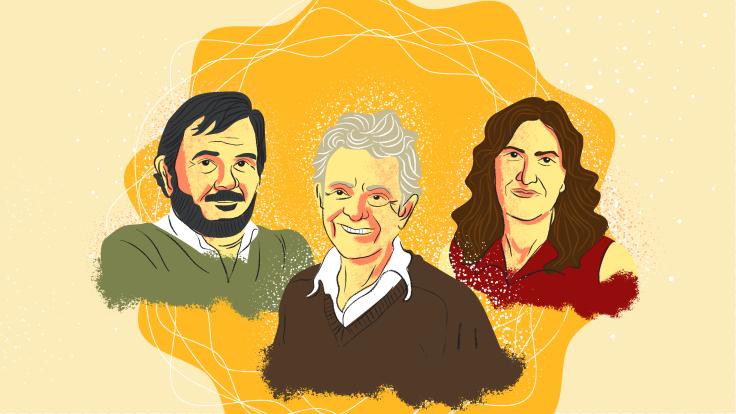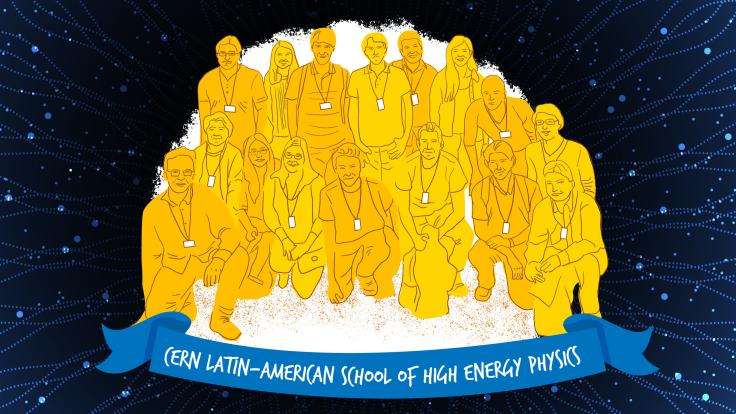Earlier this year, scientists from around Latin America gathered in São Paulo. It was the start of something new: the first-ever regional strategy for large-scale research infrastructure in Latin America.
Latin America is home to a large number of experts, the majority of Earth’s astronomical observatories, and a large number of particle physics and astrophysics projects. But only recently have Latin American scientists built up the critical mass and governmental support to create their own strategy for science moving forward.
“There could be someone in Chile working on the same topic as someone in Venezuela or Colombia, and they might not even know it,” says Carla Bonifazi, a physicist at the University of Brazil. “Making connections, opening up new lines of communication and creating an exchange of ideas between these different countries could strike up new collaborations that advance science.”
Collaboration between nations is one of the biggest forces behind some of the most revolutionary discoveries in physics in recent history. Twelve countries across Europe, plus outside partners like the United States, pooled resources and expertise through CERN to build the Large Hadron Collider. With it, they discovered the Higgs boson. The UK Science and Technology Facilities Council, the Max Planck Society of Germany and the Australian Research Council all joined the National Science Foundation in the United States to build the Advanced LIGO Project. Together with the Italy-based Virgo collaboration, whose member institutions are situated in six countries in Europe, scientists used the Advanced LIGO detector to discover gravitational waves.
Scientists and policymakers from across Latin America are banding together to carve out their future in science, and they’re starting with cosmology and high-energy physics.

Pilot project
Scientists began speaking seriously about a regional strategy in 2016, during a symposium on high-energy physics in Guatemala. In 2018 policymakers at the Ibero-American Meeting of Ministers and High Authorities on Science, Technology and Innovation made a ministerial declaration emphasizing the need to further the existing scientific activities of researchers and inspire new projects and collaborations.
This year marked the first workshop of LASF4RI, the Latin American Strategy Forum for Large-Scale Research Infrastructure.
“Through this forum, we hope to map out and prioritize scientific projects that will fire up collaborations and train a new generation of scientists in specific fields,” says Fernando Quevedo, a Guatemalan physicist and director of the International Center for Theoretical Physics.
At the workshop, which took place at the ICTP-affiliated South American Institute for Fundamental Research, participants formed two different groups. A preparatory group will create guidelines and receive white papers from the different efforts in high-energy physics and cosmology in Latin America, mapping the current landscape of scientific projects in the region. Using that information, a strategy group will provide feedback and recommendations to present at the next ministerial meeting.
“If this is going to work, we really need to engage people and get input and support from the community,” says Marta Losada, a Colombian physicist who has been spearheading the effort. “Through this workshop, we wanted to get everybody on the same page and explain what we mean when we talk about this strategy. We wanted to show why it’s important to develop this research infrastructure here in Latin America in order to move forward and be an active participant in science.”
Down the line, those involved in the project hope that this strategy can be applied to a wide range of scientific fields in the region.

A new stage of participation
One reason to start with cosmology and high-energy physics: There’s already a proposed Latin-America-led international project to discuss. The proposed ANDES Deep Underground Laboratory would take advantage of the construction of a road tunnel deep in the Andes mountain range between Argentina and Chile to host a variety of experiments that could benefit from the protection of 1700 meters of rock.
“This huge rock cover will protect the laboratory from natural radiation coming from space, allowing extremely precise experiments to be run,” says Xavier Bertou, a physicist at the Bariloche Atomic Center in Argentina who originally proposed the project along with fellow scientists Osvaldo Civitarese in Argentina and Claudio Dib in Chile. “These experiments would not work in another laboratory as they would be blinded by this space radiation.”
The laboratory, which would be the first Latin America-led facility for astrophysics, could enable the study of neutrinos and the search for dark matter, as well as investigations into geosciences—of particuliar importance since the lab would sit in a strongly geoactive region. It could also enable research in fields such as biology, material science and climate studies.
“ANDES represents a new stage of participation in particle physics for Latin America,” says Dib, a physicist at the Scientific and Technological Center of Valparaís and the national coordinator for the ANDES initiative in Chile. “It will help promote particle physics, in particular for young students who normally have little access to international particle physics laboratories. Since it will be located near the border between Chile and Argentina and led by Latin American researchers, we hope it will also inspire a scientific exchange between the different countries.”
Bertou sees the project as a natural next step for the region, since many Latin American groups already participate in particle physics collaborations based in Europe and the United States, as well as astroparticle collaborations at facilities based in Latin America, such as the Pierre Auger Observatory and the High Altitude Water Cherenkov Observatory, or HAWC.
“The science done will be quite unique in Latin America and will provide a huge boost for the community working on it,” he says. “It will be one of a small number of international laboratories in the region, opening a new way to work together to build science opportunities at an international scale.

A roadmap for the future
Since nothing like this has ever been done in Latin America, the scientists will essentially have to build this infrastructure from scratch. But for Losada, the value of a new regional strategy far outweighs the difficulties.
“We have differences with respect to other regions in the world who have implemented similar strategies,” Losada says. “Since we’ve never done anything like this here before, it’s been a challenge to get everyone on board. But we can’t keep working in small groups in little pockets and expect to make an impact. We have to develop a real coherent strategy.”
Rogerio Rosenfeld—a physicist at the Institute of Theoretical Physics of the State University of São Paulo in Brazil, one of the organizers of the workshop and the current president of the Brazilian Physical Society—says he hopes that this effort becomes truly international, nurturing more cooperation among different countries in Latin America.
According to Losada, the seeds they’re planting have already started to take root.
“One of the main effects that we’re already seeing is that the communities across countries are now talking to each other,” she says. “We’re starting to get organized in a way that we hope can be interesting and effective. Through this process, we hope to identify both our strengths and weaknesses to help us build a clear-cut roadmap of how to move forward and increase our scientific impact.
















